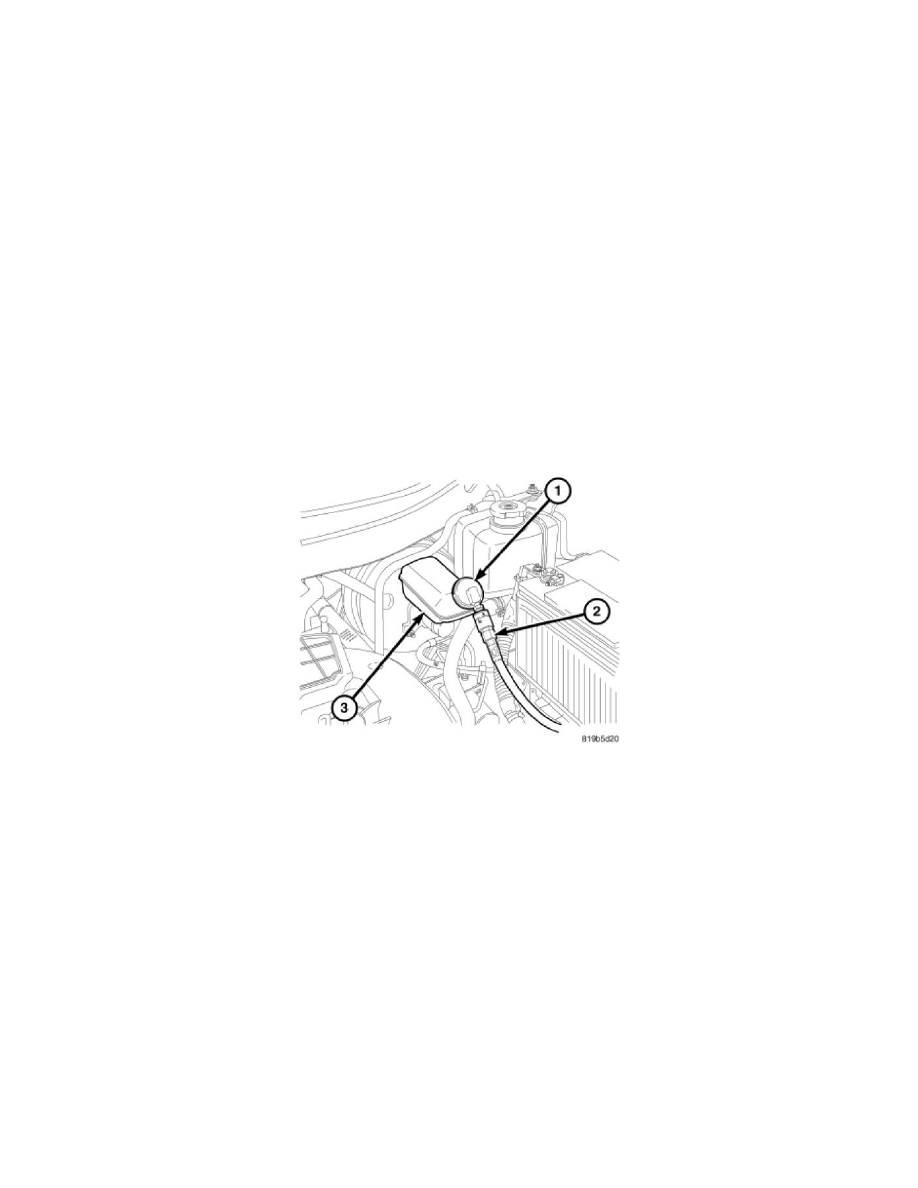Grand Caravan V6-4.0L (2008)

Brake Bleeding: Service and Repair
Base Brake Bleeding
BASE BRAKE BLEEDING
NOTE: This bleeding procedure is only for the vehicle's base brakes hydraulic system. For bleeding the antilock brakes hydraulic system,
CAUTION: Before removing the master cylinder reservoir cap, thoroughly clean the cap and master cylinder fluid reservoir to prevent dirt
and other foreign matter from dropping into the master cylinder fluid reservoir.
NOTE: The following wheel sequence should be used when bleeding the brake hydraulic system. The use of this wheel sequence will ensure
adequate removal of all trapped air from the brake hydraulic system.
-
Left Rear Wheel
-
Right Front Wheel
-
Right Rear Wheel
-
Left Front Wheel
NOTE: When bleeding the brake system, some air may be trapped in the brake lines far upstream, as much as ten feet from the bleeder screw.
Therefore, it is essential to have a fast flow of a large volume of brake fluid when bleeding the brakes to ensure all the air gets out.
Pressure bleeding the brakes is recommended, although the brakes may be manually bled or pressure bled. Refer to the appropriate following procedure.
PRESSURE BLEEDING PROCEDURE
CAUTION: Use bleeder tank Special Tool C-3496-B or equivalent with Adapter (1), Special Tool 6921, to pressurize the hydraulic system for
bleeding.
Follow pressure bleeder manufacturer's instructions for use of pressure bleeding equipment.
1. Install Master Cylinder Pressure Bleed Cap (1), Special Tool 6921, on the master cylinder fluid reservoir (3). Attach the fluid hose from the
pressure bleeder (2) to the fitting on Special Tool 6921.
